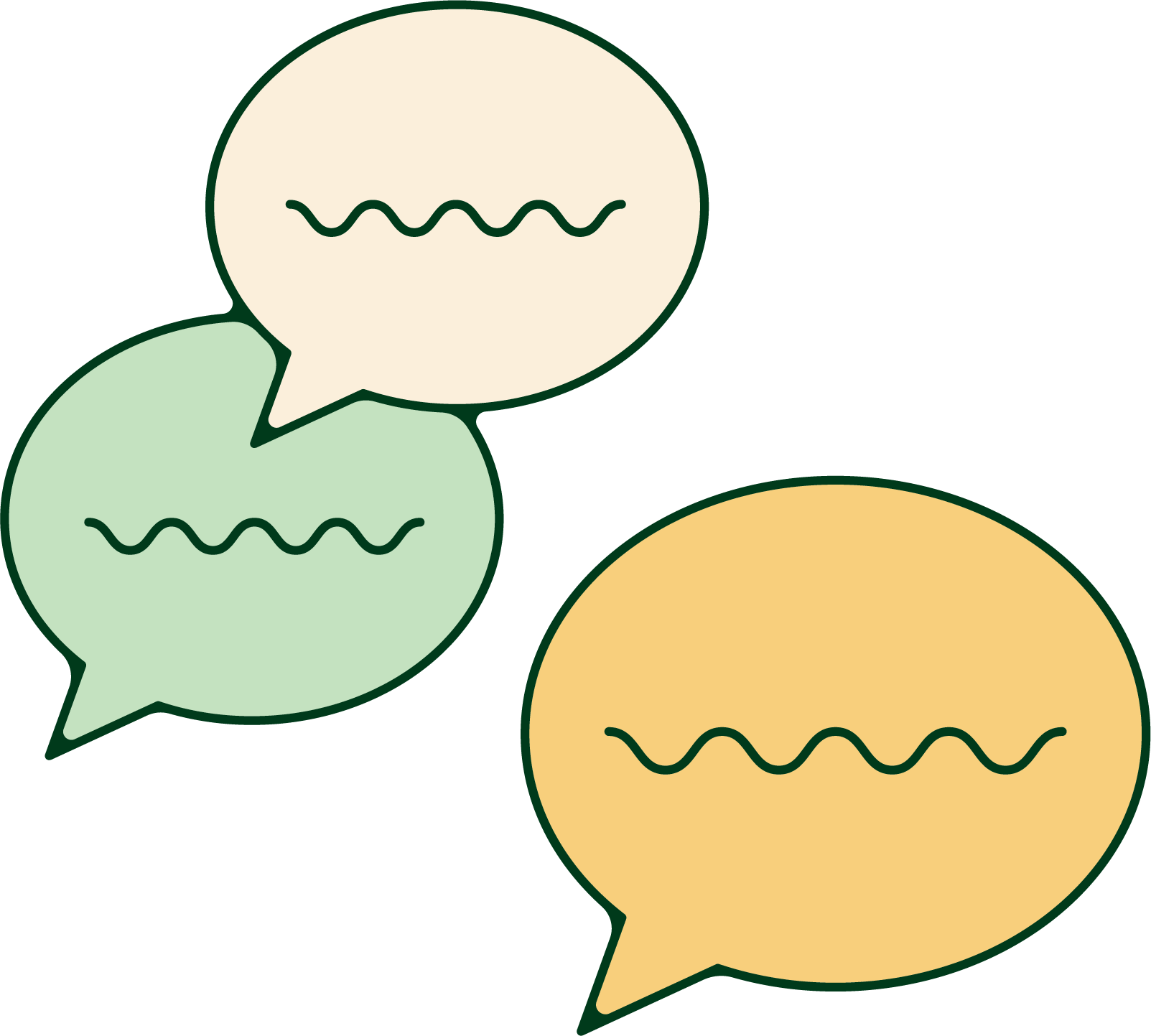Illustrated by Erin Rommel
There are approximately 1,200 different terms for vagina and vulva, and more than 5000 euphemisms used to describe a period. Yet when it comes to actually saying the words ‘vagina,’ ‘vulva’ or ‘period’ out loud, many of us cower and cringe with shame.
A study exploring attitudes around female genital slang found that 65% of respondents avoid using the words ‘vulva’ and ‘vagina,’ regarding them as embarrassing or offensive – and opting for euphemisms such as ‘fanny,’ ‘lady parts’ or ‘honey pot’ instead.
Period talk is met with similar disdain. When the UK government announced the abolition of the tampon tax earlier this year, the reaction on social media was littered with expressions of repulsion, with many insisting that the discussion should be kept ‘polite and private.’
This is a message that people who menstruate have heard and internalised throughout their lives.
Nearly half of girls aged 14-21 feel uncomfortable speaking about their period, according to research by Plan UK, with one in ten having been told not to talk about their periods in front of their parents.
There is a sexist double standard when it comes to talking about our health.
While men’s health is typically discussed neutrally and factually, or even in positive terms of strength, power and productivity, women’s health, bodies and sexuality continue to be seen as taboo.
It’s something to be silenced and hidden, or dressed up in cutesy code words and juvenile nicknames.

The restriction on speaking openly about our bodies has fostered a widespread ignorance about female anatomies.
A 2019 YouGov survey found that nearly half of women were unable to label the vagina on a diagram, while the previously mentioned genital slang study found that there is little agreement or understanding of what non-clinical terms such as ‘pussy’ and ‘fanny’ actually refer to.
This contrasted to slang for male genitals like ‘prick’ ‘knob’ and ‘balls,’ which all had widely recognisable clinical equivalents. Go figure!
Biological mechanisms associated with female physiology also receive completely different metaphorical treatment to those associated with men’s.
In her 1991 article ‘The egg and the sperm: How science has constructed a romance based on stereotypical male-female roles,’ anthropologist Emily Martin discussed the ways in which metaphors for menstruation, reproduction and menopause reinforce gendered expectations about men and women.
She found that medical texts positioned periods as a failure to conceive and reproduce, describing menstruation in terms of ‘waste’ ‘shedding’ and ‘debris.’
Contrastingly, the overproduction of sperm within a single ejaculate, which could certainly be interpreted as ‘wasteful,’ was labelled as a remarkable and highly productive feat.
To add to this exposé of linguistic sexism in science, a partial replication of Martin’s work published in 2011 showed that gynaecology chapters in medical textbooks tend to position the egg in passive terms, as in ‘was fertilised’ or ‘was released,’ while the sperm tends to be framed in active terms, such as ‘entered’ or ‘penetrated.’
This is despite evidence suggesting that the egg actually plays an active role in fertilisation by ‘catching’ the sperm and moving its nucleus towards it.
Language has played no small part in fuelling the narrative of women’s bodies, and women themselves, as inferior.
Since Hippocratic physicians in Ancient Greece adopted the term ‘hysteria’ as a catch-all for the vague and mystifying condition of ‘women’s problems,’ we have been wading through a minefield of misogynistic attitudes and stereotypes, leaving many of us without an adequate vocabulary to articulate and advocate for our own health.
It’s important to understand how linguistic choices and omissions uphold and sustain health inequalities.
“
Linguistic choices and omissions uphold and sustain health inequalities
The medical neglect women experience in health care, delays in diagnosis and treatment for critical illness that women are forced to face compared to men, and the dearth in research for women’s health issues are all part of the same patriarchal machinery that renders women’s bodies unspeakable.
With health issues routinely described as a ‘normal’ part of being a woman, our suffering is often seen as undeserving of attention and resources.
Less than 2.5% of publicly funded research is dedicated to reproductive health, despite the fact that one in three women will experience severe reproductive health issues in their lifetime, and although 90% of women are affected by premenstrual syndrome, little work has been done to understand and address it.
The stereotypes that shape the language of health also shape the standard of care we receive. Women are less likely to be given pain medication and more likely to be prescribed sedatives or referred for psychiatric treatment than men reporting the same ratings of pain.
This gap becomes even more severe when considering the experiences of minority ethnic communities. Black women are four times more likely to die in childbirth than white women, and Asian women twice as likely, because their pain is denied and dismissed to an even greater extent.
“
The stereotypes that shape the language of health also shape the standard of care we receive
Sexist language threatens our bodily autonomy as well. Stereotypes about women being too ‘hysterical’ to make rational decisions, paired with representations of our bodies as little more than reproductive vessels, have emboldened legislators to withhold and regulate access to essential healthcare, including contraception and abortion.
Restrictions on our reproductive liberties are often rationalised through the mantra of paternalism – ‘it’s for her own good’ – as if women are totally incapable of making such decisions for ourselves.
Challenging sexist language in health contexts is more than just a matter of promoting correctness and clarity. It’s a matter of promoting a world in which women’s wellbeing – and the wellbeing of all who are marginalised by the patriarchy – is truly valued.
We need to be able to talk openly, accurately and explicitly about our bodies and put an end to this communication taboo. Our health, our equality and our lives depend on it.






